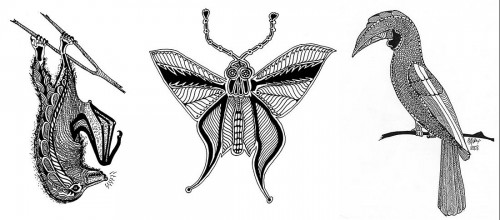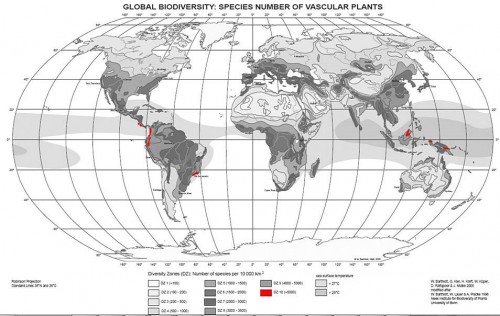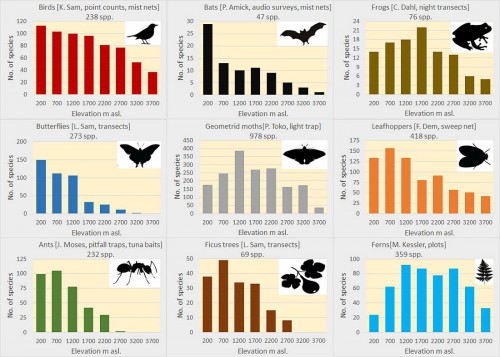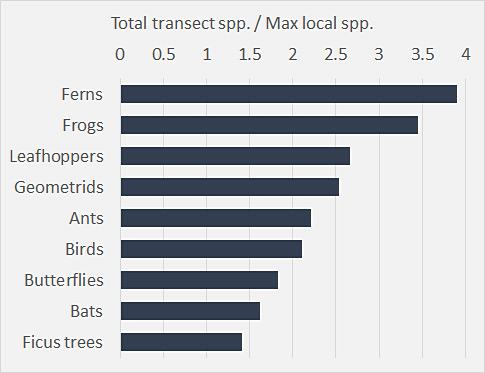Biodiversity
The Central Range including Mt Wilhelm, together with adjacent but geologically younger Finisterre Mts., belongs among the world’s seven regions with the highest plant diversity.
Number of plant species per 10,000 km2; top cathegory (>5,000 species) in red. From Barthlott et al. 2005.
Mt. Wilhelm comprises entire altitudinal variability of rainforests, from lowlands to the alpine zone at 3700 m asl. Individual taxa exhibit a variety of diversity trends with altitude, as shown by quantitative samples from communities of vertebrates, insects and plants we sampled at Mt Wilhelm:
Comparing the total number of species along the transect to the maximum local diversity at a single site indicates the importance of elevation as determinant of overall diversity. The effect of elevation is highest in ferns, with the overall transect diversity almost 4x higher than local diversity, and the smallest in Ficus trees.
Mt. Wilhelm transect harbours a large proportion of the overall biodiversity found in Papua New Guinea, including:
- 52% of PNG bat species,
- 51% of the mainland PNG bird species,
- 46% of NG Ficus species,
- 27% of PNG butterfly species,
- and 15% of PNG frog species.






